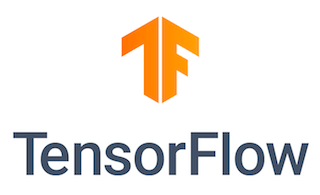How To Install TensorFlow on AlamLinux 9

In this tutorial, we will show you how to install TensorFlow on AlamLinux 9. TensorFlow is an open-source machine learning framework that has gained immense popularity among developers and researchers for its versatility and performance. Whether you are building complex neural networks or simple machine learning models, TensorFlow provides the tools necessary to streamline your workflow. This article will guide you through the process of installing TensorFlow on AlmaLinux 9, a robust and stable operating system that is perfect for development.
Understanding TensorFlow
What is TensorFlow?
TensorFlow is a powerful library developed by Google for numerical computation and machine learning. It allows developers to create data flow graphs, where nodes represent mathematical operations, and edges represent the data (tensors) that flow between them. This architecture enables efficient computation across various platforms, including CPUs, GPUs, and TPUs.
Why Use TensorFlow on AlmaLinux?
AlmaLinux is a community-driven, enterprise-grade Linux distribution that is binary-compatible with RHEL (Red Hat Enterprise Linux). It offers a stable environment for running applications and is well-suited for server deployments. By installing TensorFlow on AlmaLinux 9, users can benefit from:
- Stability and security updates from the AlmaLinux community.
- A familiar environment for those transitioning from CentOS or RHEL.
- Access to a wide range of development tools and libraries.
Prerequisites for Installation
System Requirements
Before installing TensorFlow, ensure your system meets the following requirements:
- Hardware: At least 4 GB of RAM (8 GB recommended), a multi-core CPU, and optional GPU support for improved performance.
- Software: AlmaLinux 9 installed with access to the terminal.
- Python: Python 3.6 or later is required for TensorFlow.
Installing Required Packages
To prepare your system for TensorFlow installation, you need to install some essential development tools. Open your terminal and run the following command:
sudo dnf groupinstall "Development Tools"Step-by-Step Installation Process
Step 1: Update Your System
It’s crucial to ensure your system is up-to-date before installing new software. Run the following command to update all packages:
sudo dnf updateStep 2: Install Python
If Python is not already installed on your system, you can easily install it using the following command:
sudo dnf install python3This command installs Python 3 along with essential libraries required for running TensorFlow.
Step 3: Install pip
Pip is the package installer for Python that allows you to install additional libraries easily. To install pip, execute:
sudo dnf install python3-pipStep 4: Create a Virtual Environment
A virtual environment helps isolate your Python projects and their dependencies. To create one, follow these steps:
-
- Create a new directory for your project (optional):
mkdir my_tensorflow_project && cd my_tensorflow_project-
- Create a virtual environment:
python3 -m venv myenv-
- Activate the virtual environment:
source myenv/bin/activateYour terminal prompt should now indicate that you are working within the virtual environment.
Step 5: Upgrade pip
Pip should be updated to the latest version to avoid any compatibility issues. Upgrade pip using this command:
pip install --upgrade pipStep 6: Install TensorFlow
You are now ready to install TensorFlow. Depending on your needs, you can choose between the CPU-only version or the GPU version if you have compatible hardware. For most users, the CPU version suffices:
pip install tensorflowIf you have an NVIDIA GPU and want to leverage its power, install the GPU version with:
pip install tensorflow-gpuStep 7: Verify the Installation
The final step is to verify that TensorFlow has been installed correctly. You can do this by running a simple test in Python:
python3 -c "import tensorflow as tf; print(tf.__version__)"If TensorFlow was installed successfully, this command will output the version number of TensorFlow.
Troubleshooting Common Issues
Common Errors During Installation
If you encounter dependency issues during installation, consider checking if all required packages are installed. You can also try updating pip or reinstalling specific dependencies using:
pip install --upgrade --force-reinstall package_nameVerifying Installation Problems
If verification fails with an import error, ensure that you are working within your virtual environment. If there are still issues, check if all paths are correctly set up in your environment variables.
Congratulations! You have successfully installed TensorFlow. Thanks for using this tutorial for installing TensorFlow machine learning on your AlmaLinux 9 system. For additional help or useful information, we recommend you check the official TensorFlow website.